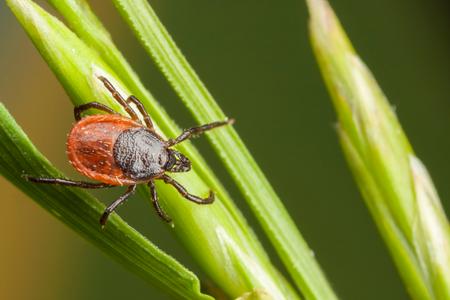
Maryland's Complete Guide To Effective Mosquito Control
08/13/2021
The mosquito! You may not think much of them at first, but these blood-feeding insects may be the most dangerous creatures on North American lawns....
READ MORE >
You’ve seen the word dozens of times, but do you actually know what DEET is? Learn more about the key ingredient found in many personal insect repellents.
What is DEET?
DEET (N,N-Diethyl-meta-toluamide) is a slightly yellow oil that’s been used in insect repellents for over 45 years. It was developed by the U.S. Army in 1946 for use by military personnel in insect-infested areas to avoid contracting diseases. DEET began to be used by civilians in 1957. Often confused as DDT by consumers, a substance that’s ban was formalized under the Stockholm Convention in 1972, DEET has been approved by the Environmental Protection Agency (EPA) and remains to be the most effective form of mosquito repellent.
There is debate on how exactly DEET works. The EPA claims DEET makes it difficult for insects to smell us by blocking the odor that attracts them to humans. However, a recent study by the University of California, Davis, has shown that mosquitoes intensely dislike the smell of DEET, effectively repelling them.
Why are there variations in concentrations?
There are different concentrations of DEET to address different needs. As a general-rule, a higher concentration of DEET will offer longer-lasting protection. In contrast, a higher DEET concentration does not mean a higher level of protection. Today's products start out with a concentration of 5% (which will last you about 90 minutes or so) and range up to 100% (for approximately 10 hours of protection from bites). It should be noted that the Center for Disease Control and Prevention has stated that any concentration higher than 50% offers no added protection.
How much and where should I apply repellent that contains DEET?
Insect repellent should be applied as a thin layer, covering all exposed skin surface evenly. There is no need to saturate the skin in order for the repellent to be effective. Do not apply over cuts, wounds, or inflamed skin. Although DEET can be applied to clothing, it should not be applied to skin that is covered by clothes, as this can cause irritation.
Why don’t DEET wristbands work?
DEET only protects the areas to which it is applied. The repellent effect of DEET cannot travel far, which is why the application of DEET on a few points on your body will not “cloak” you in protection. Hungry mosquitoes will readily find unprotected areas of skin.
What are the dangers associated with DEET?
Although DEET is recommended as an effective insect repellent by the Center for Disease Control, it is not without controversy or the potential for adverse side effects. DEET should not be applied to synthetic fabrics such as rayon or to plastics, because it can damage these products. It can also cause nerve damage, severe skin irritation, blistering and burning when not used too much.
Below are some safety tips from the CDC and other experts for safe DEET use.
|
AGE |
APPLICATION |
DEET % |
|
<2 months |
DON’T USE DEET! |
DON’T USE DEET! |
|
2 months – 2 years |
No more than once a day |
10% or less |
|
2-12 years |
No more than 3 times a day |
10% or less |
|
12 years – Adults |
Use as directed on product |
50% or less |
Are there safe alternatives?
Yes! Picaridin, oil of lemon eucalyptus, soybean oil, citronella, neem oil, and geraniol (the oil found in geraniums) have all been tested by scientists and recommended by the CDC as alternative forms of insect repellent.
Protecting your home and family from mosquitoes
Mosquito protection in and around the home encompasses a well-rounded approach to control breeding sites and subsequent mosquito populations. Consider using a pest professional to treat the foliage areas around the home regularly throughout the summer months as well as these tips to prevent mosquitoes from breeding on your property.

08/13/2021
The mosquito! You may not think much of them at first, but these blood-feeding insects may be the most dangerous creatures on North American lawns....
READ MORE >

07/15/2021
Each year, tick populations are on the rise. This is due to a multitude of factors, including climate change and increased tick habitat. Frederick ...
READ MORE >

07/15/2021
Warm weather has returned, and so have mosquitoes. You do your best to avoid these annoying insects and the itchy bites they inflict, but constantl...
READ MORE >

06/22/2021
It's Pest Prime ...
READ MORE >

Protect your home and family from nuisance and potentially damaging pests with a Preferred Care home pest control plan. Starting at $49/month

Don't let the bed bugs bite a second longer. Contact American Pest for the most comprehensive bed bug control in the industry. Learn More

Our certified rodent control pros will put an end to your frustration by getting rid of rats and mice inside your home. Learn More

Say goodbye to wood-destroying termites in your home when you contact American Pest for expert termite control. Learn More

Trust American Pest to deliver professional backyard tick control services that are guaranteed to get results. Learn More

Don't spend the warm-weather season indoors, find out how American Pest's professional treatments get rid of mosquitoes. Learn More
Fill out the form and recieve feedback in less than 5 minutes. For immediate service please call.